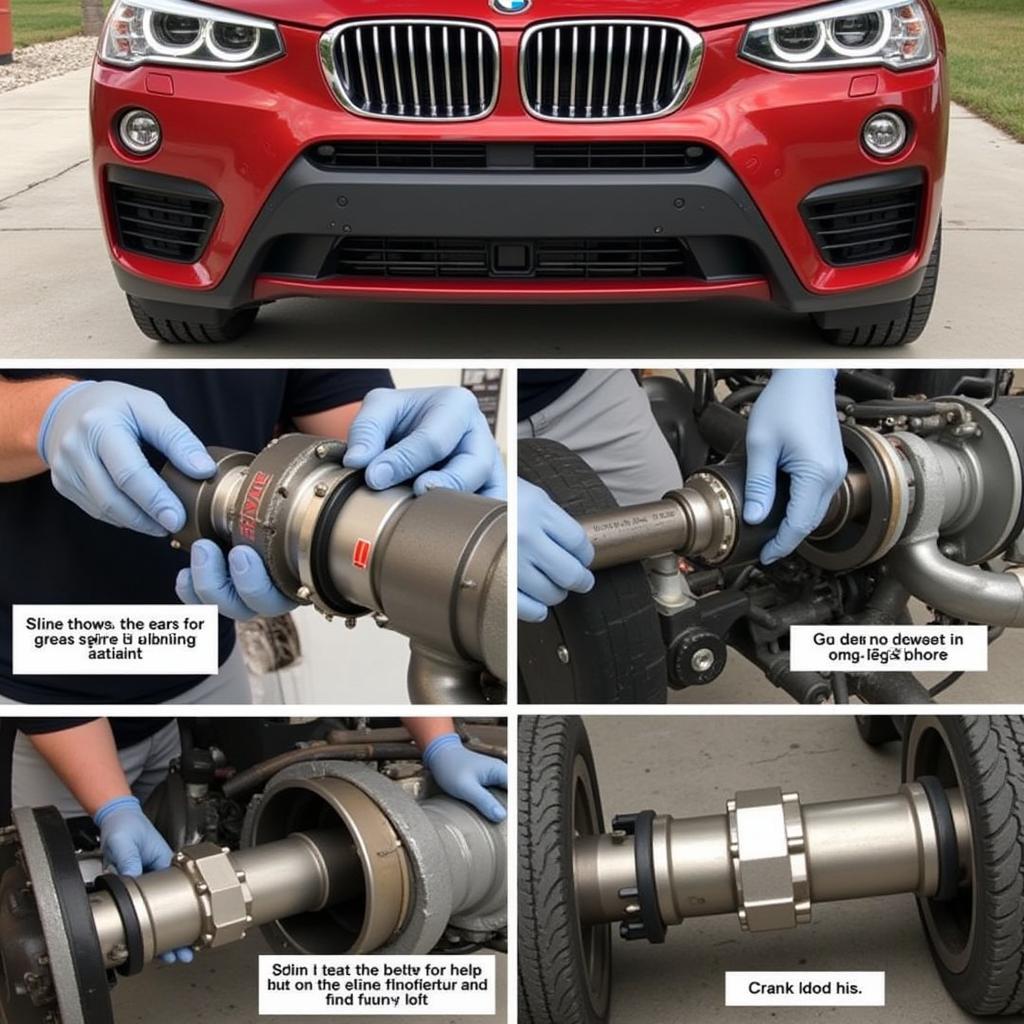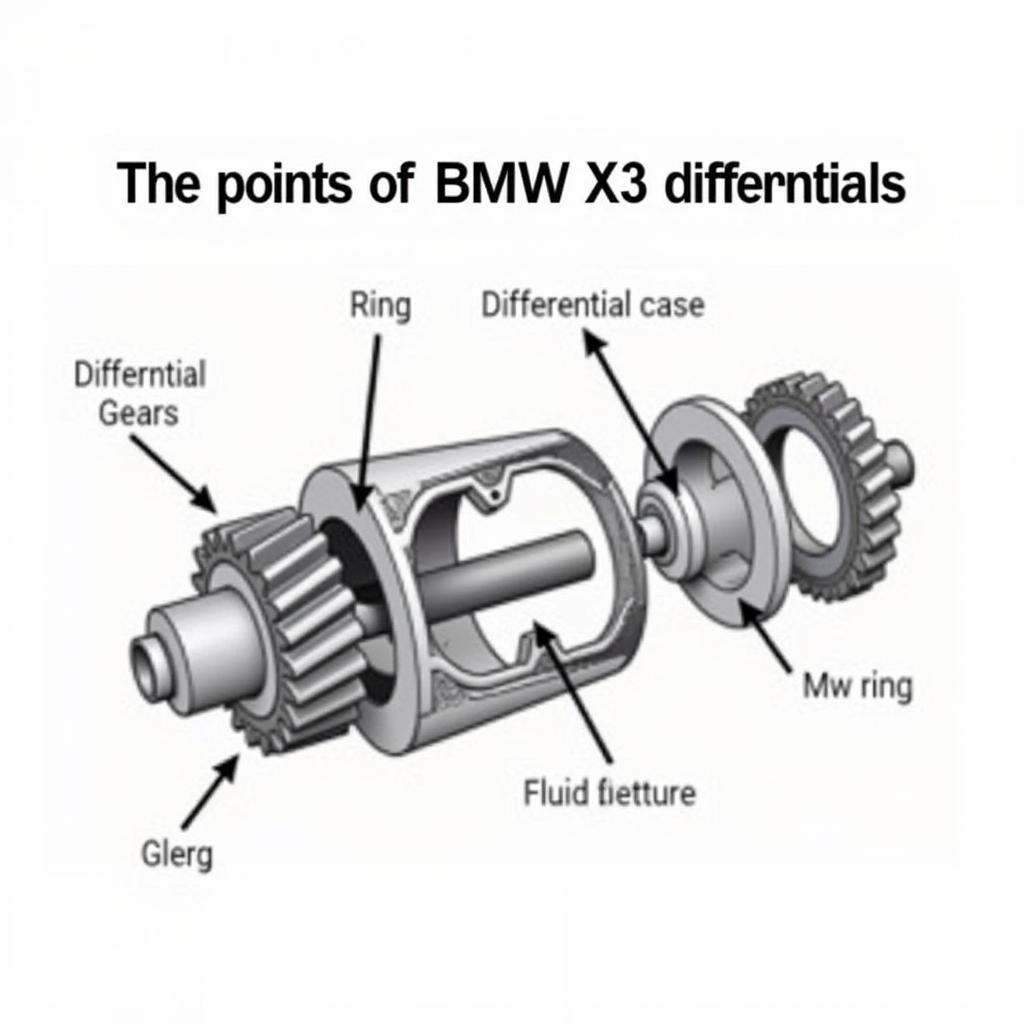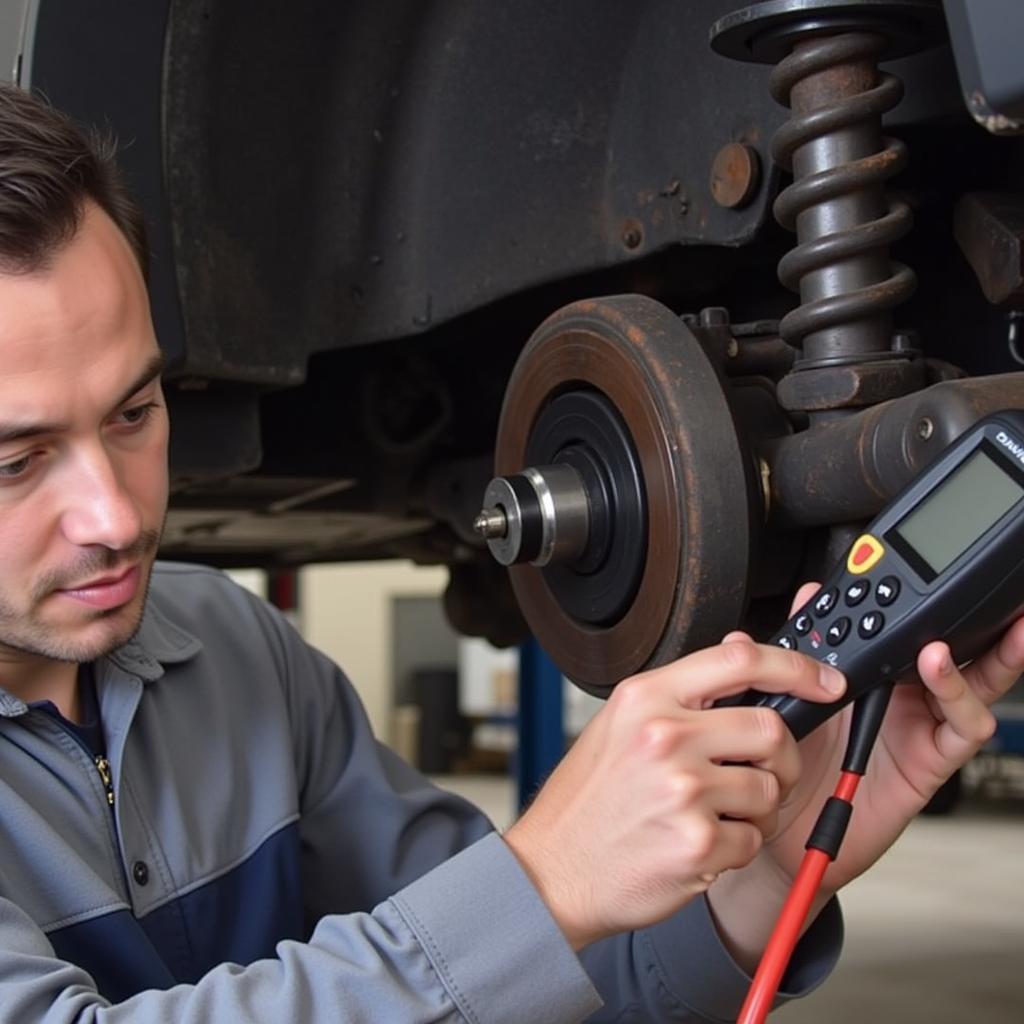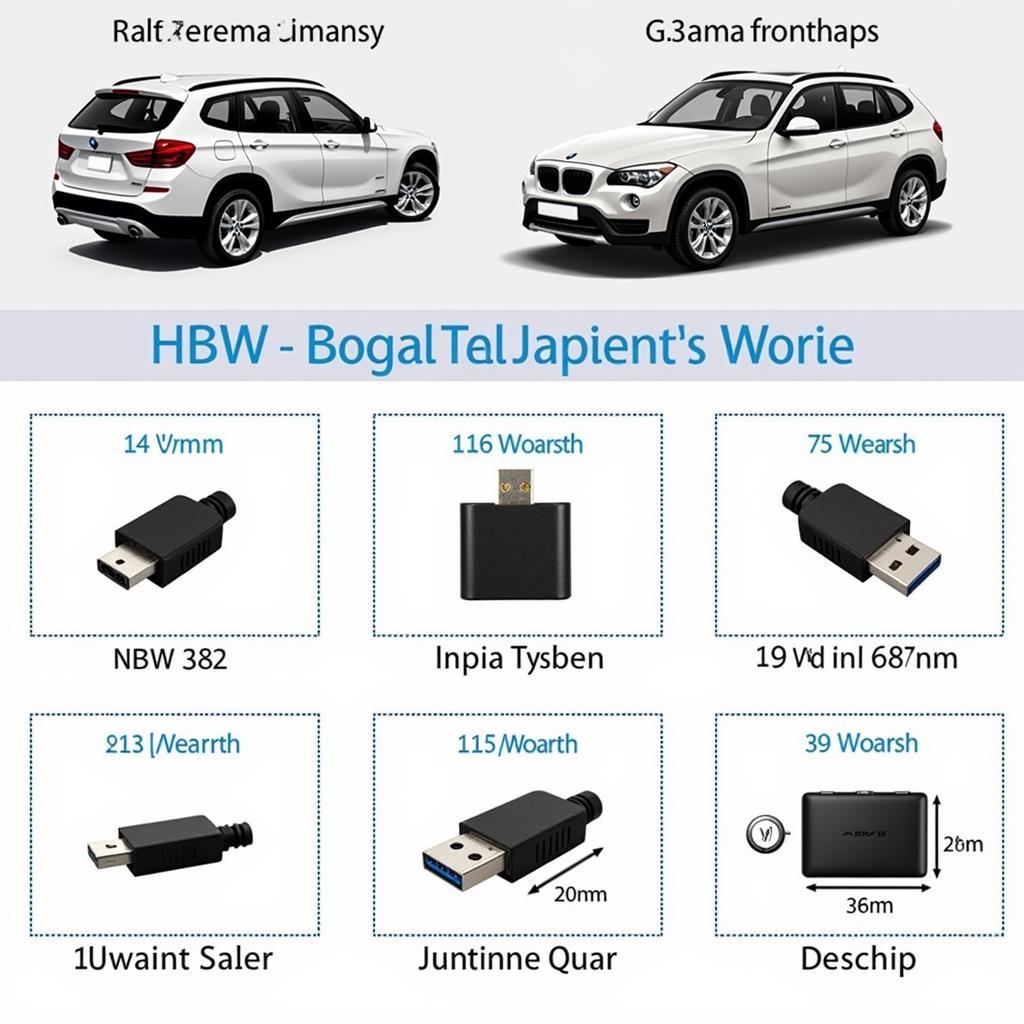You just replaced the driveshaft on your 2007 BMW X3, expecting a smooth, quiet ride. Instead, you’re greeted with a new, unfamiliar noise. This is a frustratingly common scenario, and you’re not alone. This article will explore the common causes of noise after a driveshaft replacement in a 2007 BMW X3, helping you diagnose the problem and get back on the road with confidence.
Common Causes of Noise After Driveshaft Replacement
Several issues can cause noise after a driveshaft replacement, even if the new driveshaft itself is perfectly fine. These issues range from simple oversights during installation to more complex mechanical problems. Let’s delve into the most common culprits.
Improper Installation
One of the most frequent causes is simply incorrect installation. This could include failing to properly torque the bolts, forgetting to grease the splines, or not seating the driveshaft correctly in the transmission or differential. Even a slightly loose bolt can create vibrations and noise as the vehicle speeds up.
 BMW X3 Driveshaft Installation Process
BMW X3 Driveshaft Installation Process
Worn or Damaged Related Components
Sometimes, the problem isn’t the new driveshaft itself, but other components that interact with it. A worn center support bearing, a failing universal joint (U-joint) on the opposite end of the driveshaft, or even worn differential bushings can all contribute to noise after a driveshaft replacement. The old driveshaft may have been masking these underlying issues, which become apparent with the new installation.
Differential Problems
While less common, differential issues can also manifest as noise after a driveshaft replacement. This could be due to worn gears within the differential, low fluid levels, or even a damaged differential case. These problems can create whining, humming, or grinding noises, especially during acceleration or deceleration.
 BMW X3 Differential Components Diagram
BMW X3 Differential Components Diagram
Diagnosing the Problem
Pinpointing the exact source of the noise requires a systematic approach. Start by carefully inspecting the installation of the new driveshaft. Check all bolts for proper torque, ensure the splines are adequately greased, and confirm the driveshaft is correctly seated. Next, examine the related components like the center support bearing, U-joints, and differential bushings for signs of wear or damage. Finally, have the differential checked by a qualified mechanic to rule out any internal problems.
Why is my BMW X3 making a new noise after driveshaft replacement?
A new noise after driveshaft replacement could be due to improper installation, worn related components like U-joints or center support bearings, or even differential issues.
How can I diagnose driveshaft noise in my 2007 BMW X3?
Start by inspecting the driveshaft installation, then check related components like U-joints and bearings. If the noise persists, have a mechanic inspect the differential.
What are the common sounds of a bad driveshaft?
Common sounds include clicking, clunking, whirring, or humming, often changing with speed or during turns. However, a new driveshaft shouldn’t be the source of these noises; related components are more likely the culprit.
“A thorough inspection is crucial after any driveshaft work. Don’t assume the new part is faulty – often, the issue lies elsewhere,” advises Hans Zimmer, a veteran automotive technician with over 20 years of experience specializing in BMW vehicles.
 Diagnosing Driveshaft Noise in a BMW X3
Diagnosing Driveshaft Noise in a BMW X3
“Ignoring these noises can lead to more significant and costly repairs down the road. Address the issue promptly to avoid further damage,” adds Zimmer.
Conclusion
A new sound after replacing the driveshaft in your 2007 BMW X3 can be perplexing, but by systematically checking the installation, related components, and the differential, you can identify the true culprit. Addressing the problem quickly will save you time, money, and frustration in the long run. Remember, a proper diagnosis is key to a smooth and quiet ride.
FAQ
- Can a bad driveshaft cause vibration? Yes, a worn or damaged driveshaft can cause vibrations, but a new driveshaft is unlikely the source. Look for other issues.
- How much does it cost to replace a driveshaft on a 2007 BMW X3? Driveshaft replacement costs vary but generally range from $500 to $1500 depending on the specific model and labor rates.
- How long does a driveshaft last on a BMW X3? A driveshaft can typically last 75,000 to 100,000 miles or more with proper maintenance.
- What are the symptoms of a bad center support bearing? Common symptoms include a clunking or humming noise, especially at higher speeds.
- Can a bad U-joint cause noise? Yes, a failing U-joint often creates a clunking or clicking noise, especially during acceleration or deceleration.
- What are the signs of a bad differential? Whining, humming, or grinding noises, particularly during turns, can indicate differential problems.
- Should I take my car to a mechanic for driveshaft noise? If you can’t pinpoint the source of the noise yourself, consulting a qualified mechanic is recommended.
Need Help with your BMW X3?
Contact us on WhatsApp: +1 (641) 206-8880, Email: CARDIAGTECH[email protected] or visit us at 276 Reock St, City of Orange, NJ 07050, United States. Our 24/7 customer support team is ready to assist you. We also offer remote diagnostic, programming, and software installation services to help resolve your car issues efficiently. Explore other articles on our website, CARDIAGTECH, for more helpful tips and information on maintaining your BMW X3.

